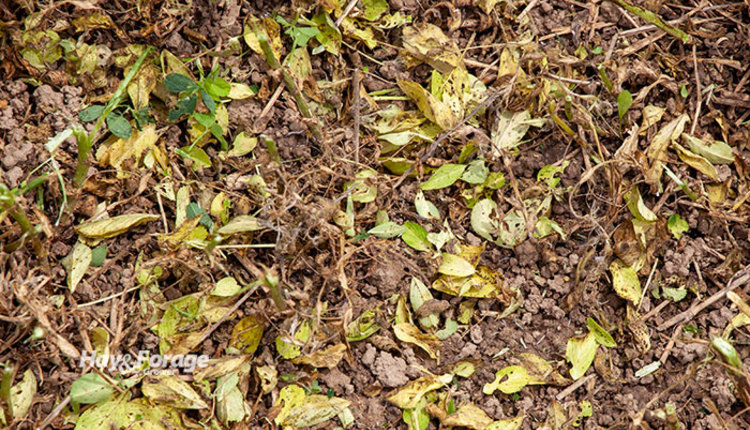Aim to limit alfalfa leaf loss |
| By Amber Friedrichsen, Associate Editor |
|
|
 The second cutting of alfalfa may be underway for some farmers and is fast approaching for others. Whether baling hay, making baleage, or chopping haylage, one of the primary goals of harvesting alfalfa is to minimize leaf loss. In the June issue of the William H. Miner Agricultural Research Institute’s Farm Report newsletter, Ev Thomas writes that retaining alfalfa leaves is key to capturing forage quality. Alfalfa leaves are the parts of the plant that contain the highest concentration of crude protein, which drives milk production in dairy cattle, the agronomist states. Thomas continued to cite research from Dan Undersander, emeritus professor and forage specialist with the University of Wisconsin–Madison, that shows alfalfa leaves have a relative forage quality (RFQ) of nearly 500. In contrast, plant stems have an RFQ value between 50 and 120. Baling hay tends to result in the greatest amount of leaf loss compared to other harvest methods. Chopping alfalfa for haylage can retain more leaves, and thus, result in a higher RFQ. With that said, Thomas shared some of his concerns surrounding mowing and windrow management when chopping alfalfa that can compromise a farmer’s effort to capture forage quality. All about equipment Thomas advises against using mowers equipped with impeller conditioners to harvest alfalfa. Impeller conditioners can improve drying times for grass forages, but they can exacerbate leaf loss in alfalfa and alfalfa-grass mixes. Another thing to consider is windrow width. Forage in a narrow windrow takes longer to dry down to optimal haylage moisture levels than it would if it were laid out in a wide swath. Moreover, dry down rates are not uniform throughout a narrow window. Forage on top will dry much faster than plant material that is trapped underneath. “While the average of too wet and too dry might result in what appears to be an acceptable moisture content, that’s a poor way of achieving it,” Thomas writes. “Chopping narrow windrows that have been allowed to dry to 35% to 40% dry matter often results in a cloud of dust, which isn’t dust at all but shattered alfalfa leaves from the top of the windrow.” A third source of leaf loss comes from raking forage. “While not all rakes are equal in causing leaf loss, my preference is for a merger properly sized for the mower, and therefore, the width of the windrow,” Thomas asserts. He suggests making windrows that are at least 75% of a mower’s cutterbar width. Doing so becomes more pertinent with greater forage yields. “Farmers spend a lot of time, effort, and money in establishing a productive alfalfa or alfalfa-grass stand. It’s a shame for a combination of poor equipment choices and bad windrow management to result in excessive leaf loss,” Thomas concludes. |
